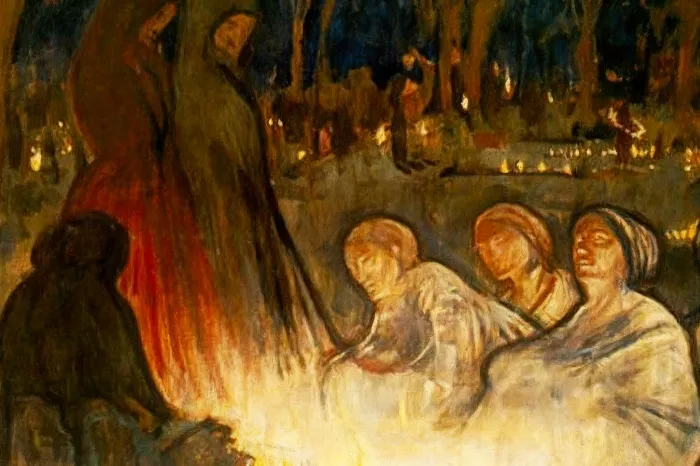Opening the Tomb: Resurrection in Context
If you’re like most people, your main exposure to resurrection probably comes courtesy of cartoons—where the protagonist dies spectacularly and then pops back up wearing wings, a harp, and a slightly confused expression. But the question “How many people did Jesus actually raise from the dead?” is no Bugs Bunny gag—it’s the sort of theological riddle that has stumped generations of Sunday School students, clergy, and anyone who’s ever tried to keep up with the Resurrection leaderboard. Today, let’s walk through the scriptural scorecard, explore why resurrection matters, and maybe even learn how death has finally met its comedic match.
The Wonders of Resurrection: The Jesus Edition
First things first: Jesus wasn’t running a resurrection factory. The Gospel writers make it clear this was not a daily appointment or some ancient form of spiritual CPR. In the biblical narrative, Jesus raised precisely three people from the dead (well, four, but only if you count his own resurrection—hard to top raising yourself, right?). The cast of risen characters are:
-
Jairus’ Daughter: The 12-year-old daughter of Jairus, a synagogue leader, gets the honor of being the first. When the mourners said she was gone, Jesus confidently declared, “The child is not dead but asleep.” Upon being told this, the crowd promptly scoffed—because that’s what you do when somebody suggests you need less funeral and more nap time. Yet Jesus demonstrates he’s more than your average sleep therapist: he takes her hand and calmly says, “Talitha koum,” meaning, “Little girl, I say to you, get up.” And she does! That’s the kind of wake up call even coffee can’t rival.
-
The Widow’s Son at Nain: Jesus walks into the village of Nain—only to encounter a funeral procession. Not one to miss an opportunity for awkwardness, he tells the grieving mother not to weep, then interrupts the procession, touches the bier, and commands, “Young man, I say to you, arise!” The young man sits up and starts talking—a surefire way to spice up any funeral. The townsfolk are amazed; the local undertaker, probably less so.
-
Lazarus: Here’s the main event—Lazarus, one of Jesus’ closest friends, who’s been in the tomb for four days (long enough that his sister, Martha, warns, “By this time there is a bad odor,” in the kind of honesty only siblings can manage). Jesus, undeterred by potential embarrassment or the need for air fresheners, orders, “Lazarus, come out!” And Lazarus does, mummy wrappings and all. If ever there were an ad for the benefits of punctual friendship visits, this is it.
Jesus’ own resurrection makes him sort of the undisputed champion, but the question at hand is how many times he pressed the ‘un-dead’ button for other folks. In sum: three separate individuals.
Why Did Jesus Raise People from the Dead? (And Was It Just for the Drama?)
Let’s address the elephant in the tomb: why would Jesus punctuate his ministry with these resurrections? Was he just showing off? It wasn’t a party trick, nor was he trying to win a “Top Miracle Worker” trophy in the Annual Galilean Awards. The raisings were declarations—the kingdom of God would dismantle the tyranny of death. The backdrop, explained in lectionary studies (see Driver’s spirited debunking of cartoon theology), is that resurrection was a tough sell in first-century religious circles. The Sadducees, for example, were the original party poopers, claiming there’s no resurrection at all (which would make every miracle story simply an exceptionally successful nap).
Jesus’ miracle-raising wasn’t just proof of power—it was a sneak preview of bodily resurrection as essential to the Gospel message. A lectionary commentator notes that Jesus engaged in witty scriptural debate, declaring that God isn’t the god of the dead but of the living. So resurrection wasn’t just about restoring physical life; it was a cosmic statement about hope, renewal, and the future of all who trust in God.
Life After Death: From Jesus’ Miracles to Our Modern Hang-Ups
Now, let’s be honest, death scares most people more than accidentally liking a ten-year-old Facebook photo. The resurrection stories aren’t just divine interventions—they challenge our deepest fears and our tendency to treat death as an awkward topic best left to movies or Halloween costumes. The All Souls Day reflections from Catholic thought reveal how the church, often accused of ‘overcomplicating’ the afterlife, actually sees resurrection as the ultimate sign of hope—a promise that we’re not doomed to endless reruns of old sitcom endings where everybody just fades out.
Pope Leo XIV’s All Souls Day homily pushes the point further (without a single joke about zombies, remarkably): prayer for the dead, he says, is sustained by the faith that we’ll someday party with them and Jesus, who conquered death not with dramatic flair but with profound love. It’s not just optimism, but “hope founded on the Resurrection of Jesus.”
Resurrection in Popular (and Cartoon) Culture: Are We Missing the Point?
If you grew up assuming heaven was a place of floating cloud condos, you’re not alone. Popular imagination often runs wild, with angels, white robes, and more wings than the International Poultry Expo. Yet resurrection is fundamentally about being reunited—body and soul—with the people we love (and presumably minus any afterlife traffic jams).
The entertainment world, as witnessed by the never-ending parade of celebrity obituaries, is all too aware of mortality, but rarely does it dig into the idea of true resurrection. Even as we say “rest in peace” to our favorite icons, the Gospel’s message stands in quirky contrast: with Jesus, there’s a future where the obituary might just be a prequel, not the end.
The Resurrection Scoreboard: Why the Numbers Count
So, to those keeping score: Jesus raised three unlucky individuals who probably had to answer a lot of awkward questions afterward (“So, what was it like?” “Did you see a tunnel?” “What’s the food situation on the other side?”). But the deeper message isn’t mathematical; it’s existential. Jesus didn’t raise everyone, but he promised that everyone who believes could share in an eternal resurrection—a future with less mourning and more joy, less fear and more celebration.
And what does this mean for us, people who cling to coffee, Netflix, and backups of family photos? If Jesus can walk into despair and turn it on its head, then no final moment is truly final.
Final Thoughts: Death Becomes Laughable (If You’re on the Right Side of the Tomb)
The next time life feels grim, remember: in Jesus’ world, death was less an ending than a door (and sometimes, apparently, just the cue for a nap). Whether you see resurrection as theology, metaphor, or miracle, one thing is certain—Jesus has better odds against death than any hero in entertainment history. And if that doesn’t help dry your tears and lift your gaze upward, consider this: no matter how many times your favorite TV character comes back from the dead, Jesus still holds the record for most meaningful comebacks.
Do you still fear death? Maybe—unless you’ve read the fine print. Then you’ll know that in the kingdom of God, the last laugh belongs to resurrection itself.




























